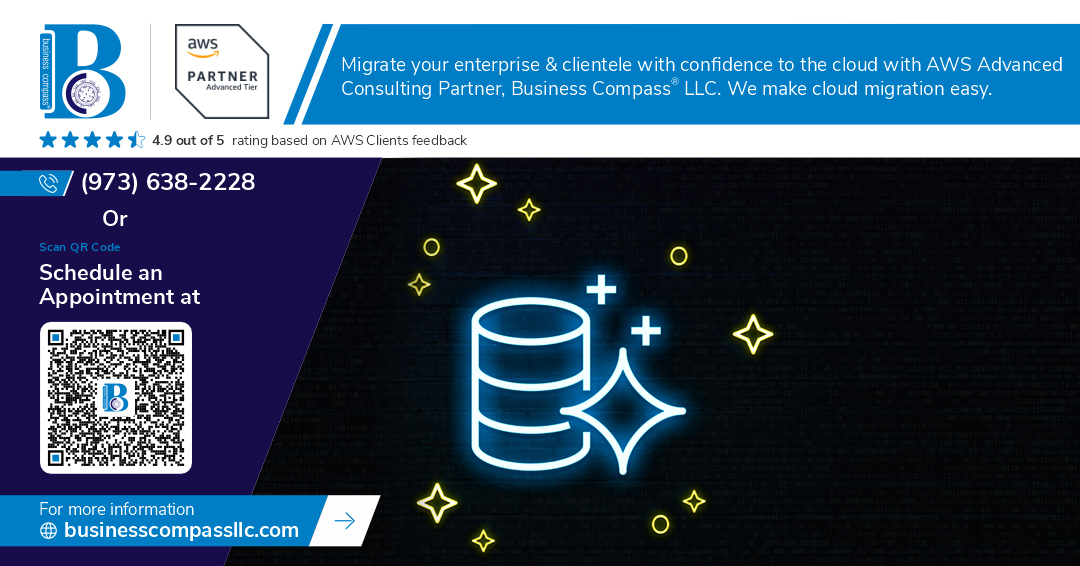Amazon Aurora DSQL represents a major leap forward in distributed SQL database technology, combining the familiar SQL interface developers love with the scalability and resilience of modern cloud infrastructure. This serverless distributed database addresses the growing need for applications that can handle massive scale while maintaining strong consistency and high availability across multiple regions.
Database architects, cloud engineers, and technical decision-makers will find Aurora DSQL particularly valuable when building applications that require global distribution, automatic scaling, and enterprise-grade reliability without the operational overhead of traditional database management.
This guide walks through Aurora DSQL’s innovative architecture and explains how its distributed design delivers exceptional performance and seamless scalability. We’ll explore the key benefits that make Aurora DSQL a game-changer for modern applications, from its serverless model to its built-in high availability features. Finally, we’ll examine real-world use cases where Aurora DSQL shines and provide practical migration strategies to help you successfully implement this powerful distributed SQL database in your organization.
What is Aurora DSQL and Why It Matters
Defining Aurora DSQL as Amazon’s distributed SQL database
Amazon Aurora DSQL represents Amazon Web Services’ latest breakthrough in cloud database technology, designed as a fully managed, serverless distributed SQL database. Unlike traditional databases that rely on single-node architectures, Aurora DSQL distributes data and processing across multiple nodes automatically, eliminating the need for manual sharding or complex database administration. This serverless distributed database delivers elastic scaling capabilities that adjust resources based on actual workload demands, making it perfect for applications with unpredictable traffic patterns. The service combines the familiar SQL interface developers love with the scalability and resilience of modern distributed systems, offering a compelling solution for enterprises seeking both performance and operational simplicity.
Key differences from traditional Aurora databases
Traditional Amazon Aurora databases operate on a cluster-based architecture with primary and read replica instances, requiring developers to manage scaling decisions and connection routing manually. Aurora DSQL breaks free from these constraints by automatically distributing queries and data across a network of compute nodes without any cluster management overhead. While standard Aurora focuses on vertical scaling within predefined instance types, Aurora DSQL provides true horizontal scaling that adapts instantly to workload changes. The pricing model also differs significantly – traditional Aurora charges for provisioned instances even during idle periods, whereas Aurora DSQL follows a consumption-based model that bills only for actual query execution time and storage used.
Revolutionary distributed architecture approach
Aurora DSQL architecture fundamentally reimagines how SQL databases handle scalability and availability challenges. The system automatically partitions data across multiple availability zones using advanced consensus algorithms that ensure consistency without sacrificing performance. Query processing happens through a distributed execution engine that can parallelize complex operations across numerous compute nodes, dramatically reducing response times for analytical workloads. Smart routing algorithms direct queries to the most appropriate nodes based on data locality and current system load, optimizing resource utilization. This approach eliminates traditional bottlenecks like single points of failure while maintaining ACID compliance across all distributed operations, setting new standards for Aurora DSQL architecture in the cloud database landscape.
Target audience and enterprise applications
Aurora DSQL targets modern enterprises running microservices architectures, SaaS platforms, and data-intensive applications that demand both scalability and operational efficiency. E-commerce companies benefit from its ability to handle traffic spikes during peak shopping periods without pre-provisioning expensive infrastructure. Financial services organizations leverage Aurora DSQL for real-time fraud detection and risk analysis, where consistent performance under varying loads proves critical. Gaming companies find value in its global distribution capabilities for player data and leaderboards across different regions. Startups particularly appreciate the serverless model that eliminates upfront database administration costs while providing enterprise-grade reliability and Aurora DSQL performance that scales with their growth trajectory.
Core Architecture Components and Design Principles
Multi-region distributed storage engine
Amazon Aurora DSQL architecture separates storage from compute through its distributed storage engine that spans multiple AWS regions automatically. The storage layer replicates data across six copies in three Availability Zones, ensuring 99.99% availability. This distributed approach eliminates traditional database bottlenecks by handling storage operations independently from query processing, allowing data to remain accessible even during regional outages while maintaining consistent performance across geographic locations.
Serverless compute layer separation
The serverless compute layer in Aurora DSQL operates independently from storage, enabling elastic scaling without managing infrastructure. Database connections automatically route to available compute resources based on workload demands. This separation allows multiple compute endpoints to access the same data simultaneously, supporting read replicas and write operations without storage duplication. Users pay only for actual compute time consumed, making Aurora DSQL cost-effective for variable workloads.
Automatic scaling and load distribution mechanisms
Aurora DSQL automatically scales compute resources up or down based on real-time demand without manual intervention. The system monitors CPU utilization, connection counts, and query complexity to trigger scaling events within seconds. Load distribution spreads queries across multiple compute nodes intelligently, preventing hotspots and maintaining optimal response times. Auto Scaling policies can be customized to match specific application requirements, ensuring consistent performance during traffic spikes while minimizing costs during low-usage periods.
Performance Benefits That Drive Business Value
Sub-millisecond query response times
Aurora DSQL delivers lightning-fast query performance through its innovative distributed architecture that processes data across multiple nodes simultaneously. The system’s intelligent query optimization engine automatically routes requests to the most efficient execution path, while advanced caching mechanisms keep frequently accessed data readily available. This combination of distributed processing power and smart data management enables Aurora DSQL to achieve sub-millisecond response times even for complex analytical queries, making it perfect for real-time applications that demand instant results.
Unlimited concurrent connections capability
Traditional databases hit connection limits that create bottlenecks during high-traffic periods, but Aurora DSQL breaks these barriers with its serverless distributed database architecture. The system automatically scales connection handling across its distributed infrastructure, allowing thousands of simultaneous users without performance degradation. Connection pooling happens transparently in the background, so applications never experience the dreaded “too many connections” error that plagues conventional databases during peak usage.
Zero downtime scaling during peak loads
When traffic spikes hit your application, Aurora DSQL performance scales seamlessly without requiring maintenance windows or service interruptions. The distributed SQL database architecture automatically provisions additional compute resources within seconds, handling sudden load increases without dropping connections or slowing response times. This elastic scaling works both ways – resources scale down during quiet periods to optimize costs, all while maintaining consistent performance for your users.
Cost optimization through pay-per-use pricing
Aurora DSQL’s serverless model eliminates the waste of paying for idle database capacity during low-traffic periods. You only pay for actual query execution time and storage consumed, not for pre-allocated resources sitting unused overnight or during slow seasons. This pay-per-use approach typically reduces database costs by 40-70% compared to traditional provisioned instances, especially for applications with variable workloads that don’t need constant high-performance capacity.
High Availability and Disaster Recovery Advantages
Built-in Multi-Region Replication
Aurora DSQL automatically replicates your data across multiple AWS regions without requiring complex configuration or manual intervention. The system continuously synchronizes data across geographically distributed nodes, ensuring your database remains accessible even during regional outages. This built-in replication happens transparently in the background, maintaining consistency while providing global data availability. You can deploy read replicas in different regions to serve local users with low latency while keeping your primary data protected through cross-region redundancy.
Automatic Failover Without Data Loss
When Aurora DSQL detects a failure, it automatically redirects traffic to healthy nodes within seconds, preserving all committed transactions. The distributed architecture maintains multiple copies of your data, so no information gets lost during failover events. Applications automatically reconnect to the new primary instance without manual database administrator intervention. This seamless failover process keeps your applications running smoothly while the system recovers failed components in the background, minimizing disruption to your users and business operations.
99.99% Uptime Service Level Agreements
Amazon backs Aurora DSQL high availability with industry-leading service level agreements guaranteeing 99.99% uptime. This translates to less than one hour of downtime per year, meeting the strictest availability requirements for mission-critical applications. The SLA covers both planned maintenance and unexpected failures, giving you confidence in your database reliability. AWS provides service credits when availability falls below these thresholds, demonstrating their commitment to keeping your Aurora DSQL deployment running continuously for your business needs.
Real-World Use Cases and Industry Applications
E-commerce platforms handling traffic spikes
E-commerce platforms experience dramatic traffic surges during Black Friday, Cyber Monday, and flash sales that can overwhelm traditional databases. Aurora DSQL’s serverless architecture automatically scales to handle these unpredictable spikes without manual intervention. Major retailers like those processing millions of concurrent transactions rely on Aurora DSQL’s distributed SQL database capabilities to maintain consistent performance across global regions. The system seamlessly adjusts compute resources based on real-time demand, ensuring shopping carts remain responsive and checkout processes never fail during peak shopping periods.
Financial services requiring global consistency
Financial institutions demand strict data consistency for transactions processed across multiple continents simultaneously. Aurora DSQL provides ACID compliance at global scale, ensuring account balances remain accurate whether customers access their funds in New York or Tokyo. Investment platforms processing high-frequency trades benefit from Aurora DSQL’s low-latency replication and strong consistency guarantees. Banks leveraging Aurora DSQL implementation can offer real-time fraud detection and instant payment processing while maintaining regulatory compliance across different jurisdictions and time zones.
Gaming applications with worldwide user bases
Modern gaming platforms support millions of concurrent players across different continents, requiring instant synchronization of player states, leaderboards, and in-game purchases. Aurora DSQL benefits gaming companies by providing consistent player experiences regardless of geographic location, preventing issues like duplicate purchases or lost progress. Popular multiplayer games use Aurora DSQL’s distributed architecture to maintain player rankings and tournament data with microsecond precision. The serverless distributed database automatically scales during major game launches or esports events when player counts spike dramatically within minutes.
IoT and analytics workloads processing massive datasets
IoT ecosystems generate terabytes of sensor data daily from smart cities, manufacturing equipment, and connected vehicles that require real-time processing and analysis. Aurora DSQL performance excels at ingesting high-velocity data streams while simultaneously running complex analytics queries without impacting operational workloads. Manufacturing companies use Aurora DSQL to process machine telemetry data for predictive maintenance while maintaining historical records for compliance reporting. Smart city implementations leverage Aurora DSQL’s scalability to analyze traffic patterns, energy consumption, and environmental monitoring data across thousands of connected devices operating continuously.
Migration Strategies and Implementation Best Practices
Assessment Tools for Existing Database Compatibility
Database compatibility assessment forms the foundation of successful Aurora DSQL migration. AWS Database Migration Assessment for Oracle (DMA) and AWS Schema Conversion Tool (SCT) provide comprehensive analysis of your existing database structure, identifying potential compatibility issues and conversion requirements. These tools generate detailed reports highlighting stored procedures, functions, and data types that need modification. Third-party assessment tools like DB Best Migration Suite offer additional insights for complex enterprise environments. The assessment phase typically reveals 70-80% automatic compatibility, with remaining elements requiring manual intervention during the Aurora DSQL implementation process.
Step-by-Step Migration Planning Approach
Migration planning requires a systematic approach starting with environment preparation and ending with production cutover. Begin by establishing a dedicated Aurora DSQL cluster in your target AWS region, ensuring proper VPC configuration and security group settings. Create a comprehensive migration timeline spanning 8-12 weeks for enterprise databases, incorporating schema conversion, data migration testing, and application compatibility validation phases. Use AWS Database Migration Service (DMS) for continuous data replication, maintaining source and target synchronization throughout the process. Performance baseline establishment becomes critical, measuring current database metrics before initiating Aurora DSQL migration activities.
Performance Tuning and Optimization Techniques
Aurora DSQL performance optimization leverages distributed architecture through strategic query design and resource allocation. Connection pooling using Amazon RDS Proxy reduces overhead by up to 50%, while read replica distribution across availability zones improves query response times. Implement partitioning strategies for large tables, distributing data across multiple nodes to maximize parallel processing capabilities. Query optimization involves analyzing execution plans using Aurora DSQL’s built-in performance insights, identifying bottlenecks in joins and aggregations. Memory allocation tuning and buffer pool configuration enhance cache hit ratios, while automated scaling adjusts compute resources based on workload demands, ensuring optimal Aurora DSQL performance.
Aurora DSQL stands out as a game-changing distributed SQL database that combines the reliability of traditional SQL with the scalability of modern cloud architecture. Its serverless design, automatic scaling capabilities, and built-in high availability features make it an ideal choice for businesses looking to modernize their data infrastructure without sacrificing performance or reliability. The separation of compute and storage, along with its multi-region replication, delivers both cost efficiency and robust disaster recovery that many organizations desperately need.
The real power of Aurora DSQL becomes clear when you see how it handles everything from e-commerce platforms managing seasonal traffic spikes to financial services requiring strict compliance and uptime guarantees. If you’re currently struggling with database scaling issues, high operational overhead, or complex disaster recovery planning, Aurora DSQL might be exactly what your organization needs. Start by evaluating your current database pain points and consider running a pilot project to experience firsthand how this technology can transform your data operations and drive real business value.




















